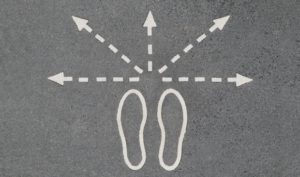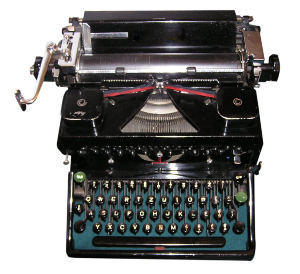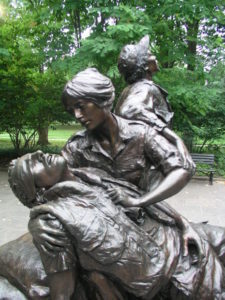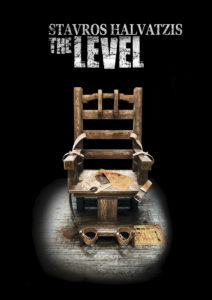Stavros Halvatzis's Blog, page 40
September 4, 2016
Asking and Answering the Central Story Question
 The first act of a story performs several central functions. Syd Field refers to this act as being governed by the setting-up process. It introduces readers and audiences to the world of the characters and their roles in it. It contains the inciting incident and the first turning point. It establishes the mood and genre.
The first act of a story performs several central functions. Syd Field refers to this act as being governed by the setting-up process. It introduces readers and audiences to the world of the characters and their roles in it. It contains the inciting incident and the first turning point. It establishes the mood and genre.
But it also poses the central question the story must answer by the end of act three. This is something that the writer might easily neglect to emphasise in the hurly-burly of setting up the tracks the story needs to ride on.
Asking and Answering the Central Question
In Making a Good Script Great, Linda Seger writes that once the central question is raised, usually within the first fifteen minutes in a film, and certainly by the first turning point in any story, everything that follows it is in response to it.
In Jaws, the question is “Will Martin catch the shark?”. In Witness, it is “Will John Book get the murderer?” In my novel, The Level, it is “Will the hero mange to get back his memory and escape the asylum?”
In a story with an up-ending the answer to the central question is usually “yes” and favours the hero.
Sometimes, however, in a more ambiguous or ambivalent tale, where solutions are not as clear-cut, the answer can be “yes” and “no”. In The Level, for example, both the hero and reader discover that the hero’s identity and capacity for escaping his confines, are inexorably linked.
Linking the answer to some unexpected deeper revelation that has been withheld until that point is a powerful way to bring the outer and inner strands of a story together at the climax. The technique offers a symbol crash to the drumroll of the final act.
Summary
The first act poses the central question of the story that is answered at the climax of the third act.
Tweet
The post Asking and Answering the Central Story Question appeared first on Stavros Halvatzis Ph.D..
August 28, 2016
How to Calibrate Actions in Stories
 IN previous articles I talked about the need to synchronise your hero’s actions against his character arc. I emphasised that the quality of his actions depends on his state of moral, spiritual, and psychological development. The hero can not defeat the antagonist until he has achieved maturity through pain and suffering – through trial and error.
IN previous articles I talked about the need to synchronise your hero’s actions against his character arc. I emphasised that the quality of his actions depends on his state of moral, spiritual, and psychological development. The hero can not defeat the antagonist until he has achieved maturity through pain and suffering – through trial and error.
But at which point, and how often, does the writer interrogate his hero?
Calibrating Actions
The answer is that the hero should be examined, at least, at the pivotal points in the story – the introduction to the ordinary world, the inciting incident, the first turning point, the midpoint, the second turning point, the climax, and the resolution.
Indeed, the introduction to the ordinary world and the resolution present the sharpest points of contrast in the hero’s growth, being at the polar ends of his character arc. They help to set the scale for calibrating his growth.
It is now easier to position actions and events between the two extremities on a scale of lesser or greater effectiveness. The second turning point, for example, contains some growth in wisdom, certainly more than at the first turning point, but less so than at the climax, which delivers the maximum growth – if the hero is to defeat the antagonist.
In Edge of Tomorrow‘s endlessly cycling reality, Major Cage, who is committed to defeating an alien enemy that can see the future, is repeatedly killed, triggering a reset in his life. It is only when he lets go of his fear of losing the woman he loves, and decides to ultimately sacrifice himself, that he is able to blindside the enemy. That moment is the climax of the story and represents Cage’s full maturation.
In my own novel, The Level, the protagonist perceives the nature of his captivity only when he embraces his true identity and uses it to defeat the antagonist.
In both cases the culmination of the inner and outer journeys create the climax of the story.
Summary
Calibrate inner and outer actions along the nodal points in your story to keep them in sync.
Tweet
August 21, 2016
What is the Decision-Making Mechanism in Stories?
 Just lately I have been preoccupied with the inner journey in stories, which got me to thinking about the decision-making mechanism that drives it.
Just lately I have been preoccupied with the inner journey in stories, which got me to thinking about the decision-making mechanism that drives it.
I have been emphasising that the story, at the level of plot, is the reflection of the protagonist’s character arc – that until the character achieves a high level of moral, spiritual and emotional self-awareness she can not prevail against the antagonist.
I want to say a little more about the mechanism that allows us to bridge the inner and outer journeys.
How the Decision-Making Mechanism Works
The protagonist initiates action as a response to some physical conflict or threat at the level of plot. Typically, she receives a challenge which she is forced to tackle head-on. But this requires that she first make a decision of how to proceed.
So: 1. A challenge is issued by the antagonist. 2. The protagonist makes a decision of how to respond. 3. The protagonist takes action based on that decision. 4. The antagonist responds, further thwarting the protagonist. 5. The protagonist initiates more action to try and achieve the goal by other means.
But because the protagonist lacks emotional, moral and spiritual maturity for the greater part of the story, she fails to make the right decisions until her suffering, resulting from her string of defeats, causes her to learn from her mistakes.
The quality of the protagonist’s decision-making, therefore, directly impacts the quality of her actions. Her efforts can only lead to victory when she has fully achieved maturity – usually by the end of the story.
In my novella, The Nostalgia of Time Travel, for example, the protagonist, Benjamin Vlahos, who is his own antagonist, can only break his decades-old isolation when he faces the truth about his childhood and forgives himself his one great mistake that led to the death of his beloved wife. It is this realisation, based on painstaking emotional, spiritual and moral maturation, that finally allows him to change his life forever.
Summary
The decision-making mechanism is the bridge between the protagonist’s inner and outer life and is tied to the character’s developmental arc.
Tweet
The post What is the Decision-Making Mechanism in Stories? appeared first on Stavros Halvatzis Ph.D..
August 6, 2016
So You Want to be Writers?
 Writers? Really? In this day and age of shrinking readership? A time when video games, a thrill-a-minute movies and digital media are stealing the public’s attention away?
Writers? Really? In this day and age of shrinking readership? A time when video games, a thrill-a-minute movies and digital media are stealing the public’s attention away?
There’s no money in it, you’re told – except for a lucky few. Go train for a real job.
And, perhaps, there is some evidence to support this view.
Are Writers Dispensable?
But you know what? The stats don’t really matter. The truth is that the world needs writers. Without a clear and unfaltering narrative, society has no sustained and unambiguous conscience. It can’t fully grasp or describe its dreams. It can’t vividly and critically explore the possibility of a brighter future against a backdrop of darker ones, thoughtfully and cogently, weighing up the consequences of each.
Writing is, by its very nature, equipped to expose, explore, evaluate. Yet, it can entertain as much as it can school.
Films present meaningful narratives, but they need screenwriters to do so. Games, too, need writers to create the game worlds their characters inhabit. Art and music can indeed critique and inspire society, but its appreciation and significance is often communicated through words, after the fact.
In their purest form, stories that first exist as novels, novellas and the like, being able to directly inhabit a character’s mind, uniquely capture the debate around a theme, a moral system. They minutely trace consequences in a way that is difficult to do elsewhere. So much so, that they often inspire other forms.
We could sit here all day debating the strengths and weaknesses of our craft in our contemporary world, but it wouldn’t really matter. Because ultimately, true writers are stubborn, willful, and imbued with a sense of purpose that can’t be shaken off.
Writers are born, not made. We do what we do because we can’t imagine doing anything else. And you can take that to the bank.
Summary
Writers consider their labours as a calling and not a mere job.
Tweet
The post So You Want to be Writers? appeared first on Stavros Halvatzis Ph.D..
July 31, 2016
Why Plot Hinges on Character
 The more time I spend thinking about stories, as a writer and teacher, the more convinced I become that it all really hinges on character.
The more time I spend thinking about stories, as a writer and teacher, the more convinced I become that it all really hinges on character.
It wasn’t always the case. When I was first starting out, I tended to emphasise the outer journey – the series of tangible events that exist at the level of plot. Back then I focused on the originality of the idea, the high concept, the attempt to grab one’s attention through a new and unique premise.
Certainly, these are important tools for developing a story. The success of my first novel, Scarab, is proof of that.
But as I went along, my focus shifted to character. I began to conceive of a story from the inside out. I obsessed over questions such as: what does the character lack at the beginning of a story in terms of her self-awareness, her moral and ethical values? What must she learn before she can accomplish her goal? What is the tension between her want and her need? In short, how could I create her developmental arc?
I began to see that the outer journey, the plot, needs, somehow, to be molded, from the materials of the inner journey. And that the events occurring at the level of plot need to be synchronised to the flows that occur along the character arc.
I recognised that the character arc, therefore, is the true precursor of the story – the reason the hero reacts to events, or initiates action in the way that she does.
This realisation has made it easier to write action and plot that is an intrinsic part of character. It’s an insurance policy against writing shallow characters that are inauthentic or artificial – a bit of advice that my students, especially those new to the subject, find helpful.
In The Nostalgia of Time Travel, I write about a man obsessed with fixing a dreadful mistake that resulted in the death of his wife many years previously. Every action, every thought he experiences stems from this obsession. Whatever else the story is about, it is also a tale about a driven man relentlessly attempting to do the impossible. A man who refuses to give up. In many respects his outer life is nothing more than a reflection of his inner life.
One of the greatest examples in literature of how character shapes the story lies in William Golding’s great novel, The Spire. The novel describes the Dean of the Cathedral’s, (Jocelin’s) determination to build a spire on top of a structure that will not support the additional weight. The effort to convince the master builder to built it is a master study in the consequences of mistaking pride and stubbornness for faith and strength.
Summary
The character arc is the progenitor of a viable plot.
Tweet
The post Why Plot Hinges on Character appeared first on Stavros Halvatzis Ph.D..
July 23, 2016
Transitions – the Hard Cut
 Transitions are a necessary part of storytelling. Leaping over unnecessary chunks of narrative through hard cuts keeps the story pacy and exciting. They free the reader from having to trudge over flat terrain.
Transitions are a necessary part of storytelling. Leaping over unnecessary chunks of narrative through hard cuts keeps the story pacy and exciting. They free the reader from having to trudge over flat terrain.
This is no more obvious than when comparing today’s films and television to those of even a couple of decades ago. What would once have been considered lively viewing now seems dull and languid.
Pace and Transitions
No doubt the pace of our contemporary lifestyle has much to do with the speeding up of the narrative flow. But it also has to do with the realisation that gaps created by effective transitions allow the reader or audience to fill in the gaps without a loss of pace. It also increases participation in a story.
But the attempt to keep things moving, especially in action genres, is not new. In her book, The Novelist’s Guide, Margret Geraghty, points out that Alistair Maclean faced a potential pacing problem in his novel, Where Eagles Dare, when Major Smith and his group get to the Oberhausen airfield and have to wait for the rescue plane to arrive.
A scene of the fugitives sitting around waiting would make for unexciting narrative. Instead, Maclean switched the viewpoint to the pilot in the rescue plane, which brought with it new information and renewed interest.
In my own novels, Scarab and Scarab II, I extensively use this technique of switching viewpoints to important characters to leap to significant parts of the story. This does not only keep the story moving along at a brisk pace, it injects new interest by exploring new information from the best possible vantage points in the story.
Additionally, when done well, the technique allows readers to fill in the missing parts which, significantly, ramps up involvement in the story.
Summary
Use hard cut transitions to skip over unnecessary parts of a story.
Tweet
The post Transitions – the Hard Cut appeared first on Stavros Halvatzis Ph.D..
July 16, 2016
How to Sympathise with a Flawed Hero
 One of the most important requirements in writing a successful story is that we sympathise with the hero. The hero, in a typical tale, is the character through whom we chiefly experience events.
One of the most important requirements in writing a successful story is that we sympathise with the hero. The hero, in a typical tale, is the character through whom we chiefly experience events.
This does not mean that the hero has no flaws. Indeed, the flaw is what helps define the hero’s character arc – the movement from ignorance to self-awareness, from wrongful action to swift and righteous action that helps him achieve his goal.
Yet, crafting a sympathetic hero has become increasingly difficult. A variety of scandals involving our politicians, military and religious leaders has served to soil our trust in the existence of unsullied, altruistic heroes.
The result has been the rise of the anti-hero, or, at least, a deeply flawed protagonist who routinely breaks the law and is not redeemed by a positively-trending character arc.
The notion of a flawed hero, as mentioned above, is not new. The great stories of the past are strewn with them – Macbeth, Othello, Hamlet. These tragic heroes are often redeemed only by their death. But the surge in popularity of flawed heroes, in recent times, is noteworthy.
Dexter, Breaking Bad‘s Walter White, and Ray Donovan are but a few protagonists who routinely murder and rob to keep themselves, their businesses, and families safe.
And yet, we like them enough to drive these shows to the top of the charts. How have the writers of these deeply flawed characters pulled this off? Here are some suggestions:
We sympathise with a flawed hero because …
The hero finds himself in a situation of undeserved misfortune:
Walter White, for example, is a brilliant chemist who is trapped in a low paying teaching job. To make matters worse he learns he has cancer that requires medical treatment he can ill afford. We cannot help but feel sympathy for his plight. Even when he begins cooking meth to pay his bills.
The law-breaking hero is smarter than the law-breakers around him:
Dexter is driven by a pathological need to rid society of serial killers – despite the fact that he himself is one. His father taught him how to do this and he has gotten very good at it. We can’t help rooting for him as he outsmarts both the police and his criminal victims time and again.
The hero acts for a cause other than himself:
Ray Donavan lies, conceals, and gets rid of other people’s problems. He often breaks the law to do this. Additionally, he places himself in peril in order to protect his brothers, his wife, his children. We cannot help but admire his loyalty and commitment.
Understanding the underlying motivation of these deeply flawed heroes helps soften our critique of them.
Summary
Understanding a character’s motivation, no matter how flawed, helps us to sympathise with his predicament.
Tweet
The post How to Sympathise with a Flawed Hero appeared first on Stavros Halvatzis Ph.D..
July 9, 2016
How to Involve Your Audience in Your Feature Script
 I recently consulted on a feature script that was nearing pre-production. The script had many things going for it – a social and historical context, a strong uplifting theme, driven characters. Certainly, there were tweaks and shimmies still needed to bring it to a final draft, but the bulk of the structural work had been done.
I recently consulted on a feature script that was nearing pre-production. The script had many things going for it – a social and historical context, a strong uplifting theme, driven characters. Certainly, there were tweaks and shimmies still needed to bring it to a final draft, but the bulk of the structural work had been done.
It just needed to amp up audience involvement in the story. The problem was that the solution had been wrongly identified as the need for more action.
Ramping up Audience Involvement in Your Feature
Sometimes writers mistake involvement for action. They erroneously add a fight scene here, a chase scene there in the belief that it will suck audiences in through sheer pace. They fail to realise that action works best only if it is built upon the foundation of rising stakes, anticipation, suspense.
Firstly, the audience has to care about the character whose life is placed in peril. This means the character has to be finely crafted to solicit sympathy, at the very least. Crafting sympathetic characters in a feature film or novel is crucial if we are to care about the story at all. I have written about this topic extensively on this site.
Additionally, at the level of plot, the story benefits through setbacks that delay the hero’s achieving the story goal. Like the drawing back of an arrow, a setback allows the shaft to travel all the faster when released. It take several forms – barriers and reversals being the most common.
Think about the number of barriers that Sam Gerard encounters in trying to find Richard Kimble in The Fugitive. Each ramps up the tension by allowing Kimble to stay one step ahead and increases our involvement in the story.
How about the reversal in Edge of Tomorrow when Major William Cage meets with General Brigham who in charge of operations?
The General wants Cage to film the Allied assault against the enemy for purposes of morale. Cage wants no part of it. When Cage tries to blackmail Brigham to force him to reconsider his decision, he ends up being stripped of his rank and sent to the front as a lowly private instead. It is a reversal that sets up the entire story.
In my science fiction novel, Scarab, the protagonist, Jack Wheeler, is confronted with a devastating choice in trying to rescue the woman he loves. He can save her from certain death, but only if stays away from her forever. It is a reversal that increases our involvement in the story.
With regard to the script I consulted on, I suggested that we replace a couple of poorly motivated ‘action’ incidents with two ‘barrier’ events and a reversal and leave it at that. That seemed to do the trick.
Summary
A sympathetic hero, in a feature film or novel, who encounters obstacles and reversals in trying to achieve his goal increases audience involvement in a story.
Tweet
The post How to Involve Your Audience in Your Feature Script appeared first on Stavros Halvatzis Ph.D..
July 2, 2016
How to Keep Evolving Stories on Track
 Are stories evolving? In his book The Screenwriter’s Workbook screenwriting guru Syd Field wrote this about the screenplay: […] I think we’re in the middle of a screenwriting revolution, a time where screenwriters are pushing the form in new directions.”
Are stories evolving? In his book The Screenwriter’s Workbook screenwriting guru Syd Field wrote this about the screenplay: […] I think we’re in the middle of a screenwriting revolution, a time where screenwriters are pushing the form in new directions.”
This insight may well be applied to all stories.
Evolving Structures
In my own PhD thesis, Multiform and Multistrand Narrative Structures in Hollywood Cinema, I trace the impact of digital media on the story-telling form. I suggest that since stories are structured to reflect our experiences their form is likely to change when experience changes.
The increasing non-linearity of life, reflected in the web environment in which we spend so much time, must influence our understanding of action – even of time and space.
Meaning, and our interpretation of it, which rests on our salient understanding of how time and space structures experience, has to shift under such pervasive and persistent pressure.
This may explain the popularity of films such as The English Patient, Cold Mountain, 2046, Pulp Fiction, Memento, Donnie Darko, Inception, and many others.
These films muddle our understanding of linear sequencing, of cause and effect. They rearrange past, present and future, making the status of what is real problematic. The idea is to reflect, at the level of structure, the bewildering complexity and multiplicity of contemporary life.
The danger in tinkering with the traditional form defined by Aristotle as a narrative that has a beginning, middle and end, however, is that the emotional impact on the reader is lessened. Stories that fail to evoke strong emotion are not effective.
My advice to authors and screenwriters who choose to write in evolving, non-linear forms, then, is to ensure that their characters continue to evoke powerful emotion in us – passion, sadness, joy, disdain – the usual fare of traditional story-telling.
I’d like to think I followed my own advice in my non-linear novel, The Level.
Evolving form and structure, then, should never dazzle us at the cost of lessening the emotional impact of our characters. Not if we want our audiences and readers to give a damn.
Summary
Never allow the evolving form and structure of stories to get in the way of emotion.
Tweet
The post How to Keep Evolving Stories on Track appeared first on Stavros Halvatzis Ph.D..
June 25, 2016
Evocative Language and Mood
 Great writing is evocative. In her book, The Novelist’s Guide, Margaret Geraghty emphasises that evocative language builds expectation, tension, and establishes mood.
Great writing is evocative. In her book, The Novelist’s Guide, Margaret Geraghty emphasises that evocative language builds expectation, tension, and establishes mood.
Here is an example of mood building from Robert Ludlum’s The Parsifal Mosaic:
Evocative Writing.
‘The man in the dark overcoat and the dark-brimmed hat that shadowed his face climbed out of the two-toned coupe; with difficulty he avoid stepping into a wide puddle by the driver’s door. The sounds of the night rain were everywhere, pinging off the hood and splattering against the glass of the windshield, thumping the vinyl roof and erupting in the myriad pools that had formed throughout the deserted parking area on the banks of the Potomac river.’
This may at first appear to be a rather unexciting, scene-setting passage. Do we really care about the sound of rain? But upon closer examination the choice of words is informative.
The rain is ‘pinging’, ‘spattering’, ‘thumping’, ‘erupting’. These are explosive, evocative words. Rain is a symbol of the turmoil to come – it brings to mind the sound of bullets, the thudding of bodies. As readers we feel this subliminally and it raises our interest and expectation.
Evocative language is versatile. It helps create deeper levels of meaning and emotion that underpin the story. The writer sets up mood and expectation then expands it through action and plot.
In my novel Scarab, I try to create a sense of mystery and intrigue through words that evoke an otherworldly time and place beyond the confines of the underground chamber where the encounter between an archeologist and the mythical Sphinx occurs:
“The form broke free from the bright haze that enveloped it, as if encouraged by his request. It approached slowly, deliberately, feline-like, swaying a little from side to side, but drowsily, as if in a dream. Drake heard the sound of nail or claw, he knew not which, clicking along hard stone, growing louder and more distinct.
He could almost make it out now, but it was more of an intuition than a clear vision, like a shape glimpsed out of the corner of one’s eye by cells more sensitive to movement than to light—a shape which the mind had more to do in the making, than the eye in seeing.
It was indeed feline in movement and in appearance, like a giant cat, only larger and more graceful. Drake’s heart was bursting at the wonder of it. It seemed so close now, though distance was hard to judge. He reached out his hand, beckoning it forward. It hesitated a little, as if cautious of approaching the pleading man.”
In the above passage, words and phrases such as “drowsily”, “dream”, “shape”, “form” “broke free from the bright haze”, and “the sound of nail or claw”, help create just the right mood of mystery and anticipation the scene demands.
Summary
Use evocative language to create the appropriate mood for your scenes.
Tweet
The post Evocative Language and Mood appeared first on Stavros Halvatzis Ph.D..



